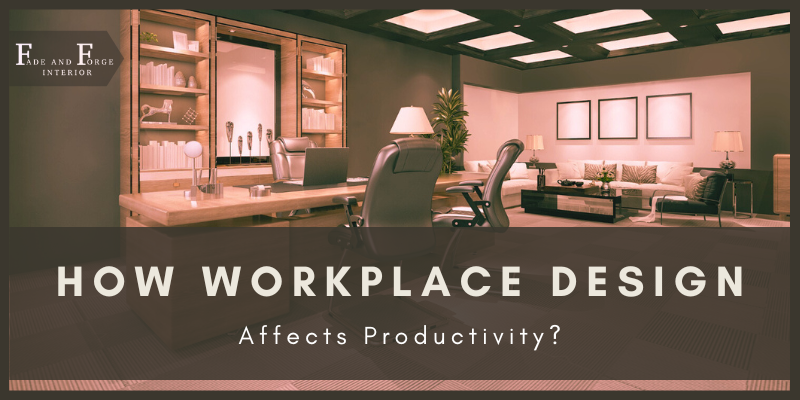
In the dynamic landscape of modern business, organizations are constantly seeking ways to boost productivity and maximize efficiency. One often overlooked aspect that can significantly impact employee performance is workplace design. How workplace design affects productivity is a critical consideration for businesses aiming to create an environment conducive to success.
Ergonomics Matter
When we delve into how workplace design affects productivity, ergonomics takes center stage. Ergonomically designed workspaces contribute to employee well-being, reducing the risk of physical discomfort and musculoskeletal issues. Comfortable chairs, adjustable desks, and proper lighting are essential elements that support productivity. By investing in ergonomic furniture, companies demonstrate a commitment to their employees’ health and, in turn, foster a more focused and efficient workforce.
Collaboration Spaces
An integral part of understanding how office interior design impacts productivity involves acknowledging the significance of collaboration spaces. Open layouts and strategically placed communal areas encourage spontaneous interactions among team members. These spaces facilitate idea exchange and teamwork, fostering a culture of innovation. By promoting collaboration, organizations can harness the collective intelligence of their workforce, ultimately boosting overall productivity.
Natural Light and Ventilation
Consideration of how workplace design affects productivity extends to the incorporation of natural light and ventilation. A well-lit, airy workspace has been linked to increased employee satisfaction and reduced stress levels. Exposure to natural light has also been shown to enhance mood and regulate sleep patterns. By designing workspaces that prioritize natural elements, companies create a more pleasant and invigorating atmosphere, positively impacting employee performance.
Flexible Workstations
Recognizing the diverse needs of a workforce is crucial in understanding how workplace design affects productivity. Providing flexible workstations allows employees to choose the setting that best suits their tasks. Whether it’s a quiet corner for focused work or a collaborative area for team projects, versatile workspaces empower employees to optimize their environment for maximum efficiency. This adaptability contributes to a dynamic and responsive workplace, fostering a culture of agility and innovation.
Technology Integration
In the digital age, seamless technology integration is paramount when contemplating how workplace design affects productivity. Well-designed workspaces incorporate the latest technologies, ensuring that employees have the tools they need to perform their tasks efficiently. From high-speed internet connectivity to state-of-the-art communication systems, a technologically advanced workplace enhances workflow and minimizes disruptions, resulting in heightened productivity.
Employee Well-being Initiatives
An often overlooked aspect of how workplace design affects productivity is through the incorporation of employee well-being initiatives. Fitness spaces, relaxation areas, and wellness programs contribute to a healthier and more engaged workforce. By prioritizing employee well-being, companies can reduce absenteeism and increase job satisfaction, leading to improved overall productivity.
Personalized Workspaces
Understanding how workplace design affects productivity also involves acknowledging the importance of personalized workspaces. Allowing employees to customize their workstations according to their preferences can have a positive impact on morale and job satisfaction. Personalized spaces create a sense of ownership, empowering employees and promoting a conducive environment for increased productivity.
In conclusion, how workplace design affects productivity is a multifaceted consideration that encompasses ergonomic principles, collaboration spaces, natural elements, flexibility, technology integration, employee well-being, and personalized workspaces. By prioritizing these aspects, businesses can create an environment that not only attracts top talent but also nurtures a highly productive and motivated workforce. As organizations continue to evolve, understanding and implementing effective workplace design strategies will remain instrumental in achieving sustained success in the competitive landscape of today’s business world. Moreover, you can hire experts for office interior design services, such as Fade and Forge Interior, to enhance your workplace and boost productivity.
